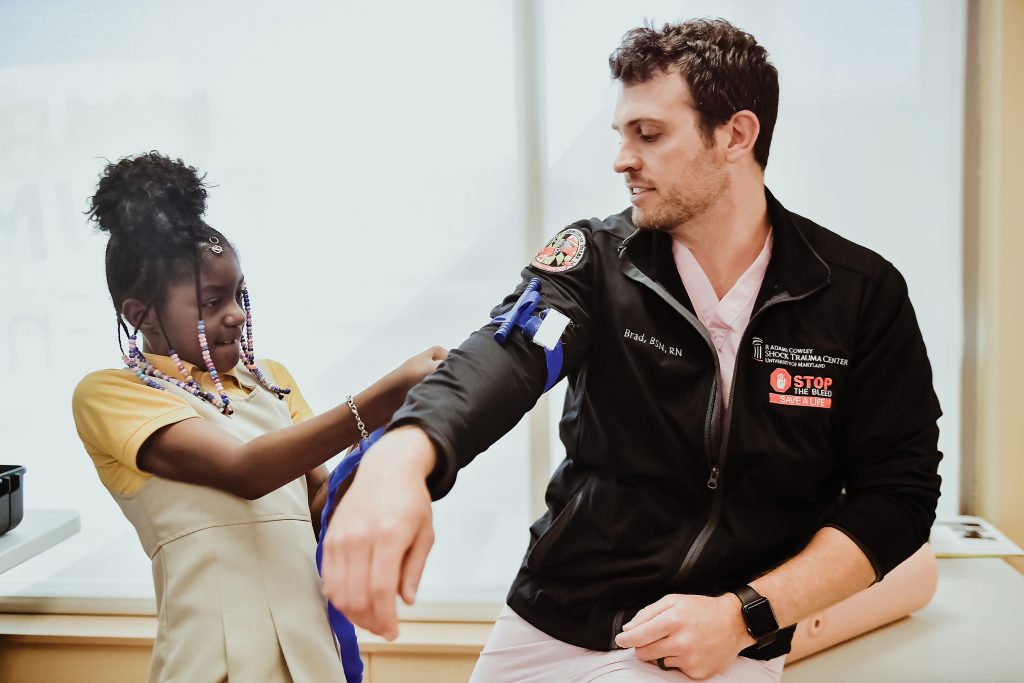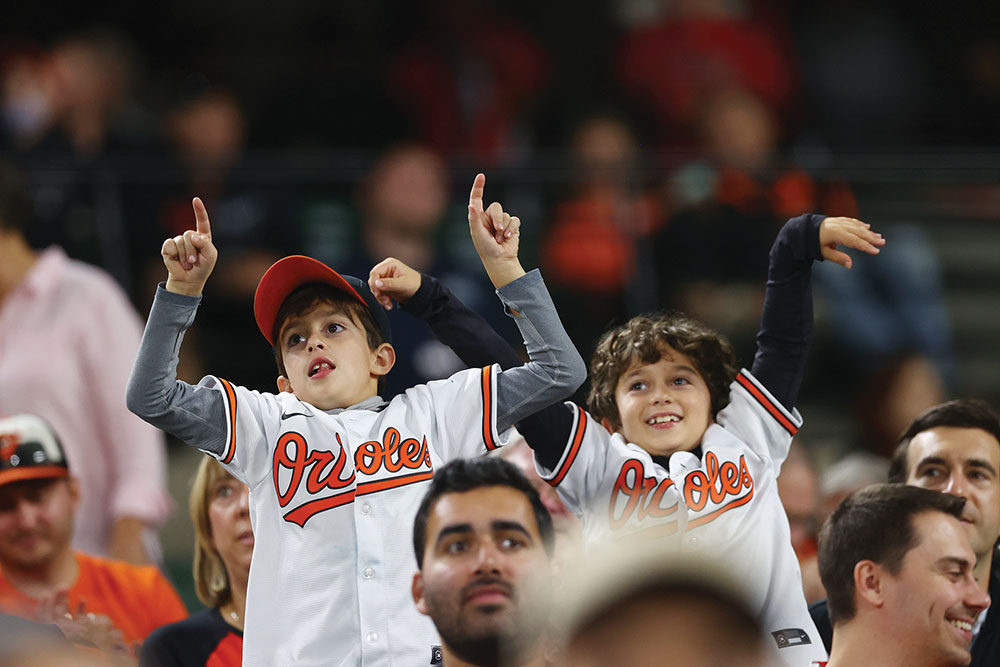
This story is part of a Baltimore’s Child series on school safety which won a Silver Award for writing from the national Parenting Media Association.
University of Maryland trauma surgeon Dr. Habeeba Park stands in front of 17 elementary schoolers, who are tired, fidgety and still in uniform from their school day, and step-by-step tells them what to do if they ever encounter someone who has a serious bleeding injury.
“The first thing is do not put yourself in harm’s way,” she says. “OK, what’s the first thing to remember?”
“Stay safe,” a kid calls out.
Park, a parent herself, knows her audience and regularly quizzes the kids like this throughout her presentation. She has a lot of territory to cover — applying tourniquets and packing wounds among other medical knowledge — as she shares information from the nationwide Stop the Bleed program.
How it got started
Stop the Bleed was developed by the American College of Surgeons after the Sandy Hook Elementary School shooting in 2012. The ACS formed a committee that included trauma doctors, members of the military and staff from other federal agencies who looked at ways to reduce the number of casualties in shootings or other violent events. One conclusion was to arm the average person with some basic medical skills that would allow him or her to help an injured person until first responders arrived.
The skills taught through Stop the Bleed are both common sense and next-level first aid, according to the physicians teaching on this day. The hour-class includes Park’s presentation and then the chance to practice skills with staff from University of Maryland’s R Adams Cowley Shock Trauma. The pupils are mostly students at James McHenry Elementary School in West Baltimore’s Hollins Market neighborhood who regularly gather on Thursdays at the university’s Community Engagement Center for the Police Activities League program.
Park tells the children how to figure out if an injury is life threatening and what to pack a wound with, if a gauze or other first aid supplies aren’t available. That includes, as one child inquires, their own stinky socks.
Once a wound is packed, “put all your weight on it and don’t let go until help gets there,” Park says.
“So they can stay alive?” one kid calls out.
“So they can stay alive,” Park says, nodding in agreement.
The children have lots of questions and Parks works the room, answering and reinforcing her message, even walking them through what they should say when they call 911.
“What if 911 takes too long?” one boy asks.
Then, you’ll be ready, says Park’s colleague, fellow trauma surgeon Dr. Jason Pasley. “Before the police or the firefighters or the paramedics, you’re going to be the extension of that.”
Hands-on training
Soon it’s time for the children to practice tourniquets on each other and pack foam bolsters that resemble injured limbs. Eight-year-old Logan Vaughn, a student at KIPP Harmony Academy, is a natural at these skills and enjoys practicing them again and again.
“I like that we learned something new, and I learned about something I want to do in my career,” she says.
Pasley eagerly coaches her and her classmates. “Keep stuffing,” he says, advising a boy who is packing a simulated wound. “You’ve got a long way to go, but you’re helping this guy out.” A recent military retiree, Pasley says he is “passionate” about this project, because of all the training and equipment that he and his colleagues can access won’t matter if a patient dies before reaching the hospital.
“Bystanders can make a difference,” he says.
He and a colleague are preparing to teach the class in Spanish to a group of landscapers. They have also taught high school students, church groups and fans at both Orioles and IronBirds games.
With shootings in the news, Pasley says he has noticed a greater interest in Stop the Bleed. “People want to learn this stuff, just in case,” he says, adding that the skills are useful in the aftermath of accidents, falls or other medical emergencies.
“I think it’s important for everyone to learn something like this, because accidents can happen anywhere,” he says. “At home, in the mall, at school.”
Kelly Quinn, a senior program specialist at the engagement center, agrees. Stop the Bleed fits in well with an ongoing series at the center, “Taking Care of Our Own,” which includes cooking lessons, techniques for coping with street harassment and CPR instruction, by offering similar “practical skills all should know.”
“We’re getting ready for summer and there’s a lot more injuries in the summer,” she says.
This is third time the center has offered the class and the first time for children. She likes how Stop the Bleed provides another way to “take the resources from east of Martin Luther King Boulevard and put them in reach of the men, women and children who live west of Martin Luther King Boulevard.”
Plus, the kids get to meet doctors and nurses. “Any time they get to see professionals in action, they learn about a new career,” she says.









